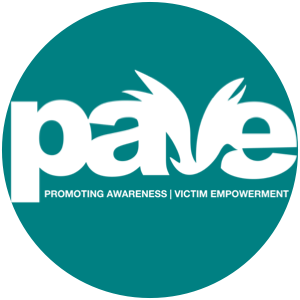Safe Sport: Athlete-Survivors’ Recourse
In 2016, Rachael Denhollander, a Kentucky-based attorney and former upper-level gymnast, came forward with allegations of sexual abuse against Larry Nassar. The Michigan State University and U.S. Gymnastics team doctor was sentenced to over 300 years in prison in 2018. Some of the more than 330 women who came forward, including Olympic gold medalists Aly Raisman and Simone Biles, gave impact statements in a mid-2021 trial that captivated the nation. In her statement, Biles bravely called out “an entire system that enabled and perpetuated his abuse.”
Gymnastics, though, is not the only sport that has had a recent reckoning with sexual abuse. American horse sport, for example, has recently been exposed to be harboring numerous abusers. In 2017, in response to Nassar’s crimes, Congress passed the Protecting Young Victims from Sexual Abuse and Safe Sport Authorization Act, establishing the U.S. Center for Safe Sport. Since then, the Center for Safe Sport has undertaken more than 7,000 abuse cases and implemented mandatory reporting and new rules regarding minors in Olympic sports.
What is the Center for Safe Sport?
The U.S. Center for Safe Sport is a Congressionally-created agency that seeks to prevent sexual abuse in sport and to bring justice to survivors. The Center has power over all Olympic organizations, Paralympic organizations, and NGBs (National Governing Bodies) in the United States. The Center was created by a 2017 Act of Congress, and both receives reports from survivors and mandatory reporters and provides education for adults involved in competitive sports.
How do Safe Sport reports work?
Safe Sport reports can be made by athletes, but they can also be made by parents, peers, coaches, or witnesses. Although Safe Sport was founded primarily to protect child athletes, reports can also be made on behalf of adults. Unlike the criminal justice system, there is no statute of limitations for Safe Sport reports – perpetrators can still be reported, investigated, and held responsible if the abuse took place years or even decades ago. However, the Center for Safe Sport can only investigate claims from within Olympic, Paralympic, or NGB organizations, i.e., they do not have any jurisdiction over cheerleading or dance, for example, or the NCAA. Examples of organizations over which they do have jurisdiction include the U.S. Equestrian Federation, USA Swimming, and the U.S. Tennis Association.
Reports can be made directly on the Center's website. They can also be done over the phone. After the initial report is made, the Center assesses the report under standards which are outlined in its Code; they investigate and make decisions based on the preponderance of the evidence standard rather than the justice system’s innocent until proven guilty standard. This means that the Center rules in favor of the Claimant if the events “more likely than not” took place, instead of “beyond a reasonable doubt.” University Title IX departments generally function under this standard as well. Claimants have the right to an advisor, typically an attorney, during the reporting and investigation process, and can request anonymity.
What consequences do abusers face under Safe Sport?
There are a number of different outcomes for reports to the Center for Safe Sport.
The first action the Center may take is a Temporary Measure. These are effective immediately, and failure to comply is considered a separate violation of Safe Sport rules. Temporary Measures can include enforced changes to training schedules, chaperone requirements, or temporary suspension from the sport.
After the investigation, the Center’s final decision is kept confidential. However, it’s important to note that in tight-knit competitive communities, it may be difficult to keep people from talking. There are a number of final sanctions the Center can implement:
Written warnings: A formal admonition from the Center that a perpetrator violated the Safe Sport Code;
Probation: A period of time in which further Code violations may be met with suspension or expulsion from the sport;
Suspension, eligibility restrictions: Ineligibility for any and all sporting activities for a specified period of time; after the suspension period lapses, reinstatement may be contingent on specified restrictions or rules;
Ineligibility or permanent ineligibility: An indefinite ban from all sport related activities. This normally happens in concurrence with criminal or civil charges, but not always. Ineligibility is until further notice, and permanent ineligibility is forever;
Other measures: Other measures include no contact orders, requirement to complete trainings, or loss of privileges.
It’s worth noting that there is a possible arbitration process following the Center’s decision on a report. Respondents have ten days to request arbitration; the process is done by an attorney or judge, who decides once and for all if the Center made the appropriate sanction.
This process, especially arbitration, could certainly be difficult or even retraumatizing for survivors. It is highly recommended that survivors have attorneys as advisors for the process if possible; the Center must be notified of advisors.
What educational resources does the Center for Safe Sport provide?
The Center for Safe Sport offers publicly accessible educational courses, courses tailored for certain groups of people (parents, athletes with disabilities, etc.) and courses tailored specifically for NGBs. The main training is a 90-minute crash course called The Core Course, to which three accessory courses can be added: Recognizing and Reporting Misconduct, Preventing Misconduct, and Creating a Positive Sport Environment. Many NGBs require adult members to participate in Safe Sport trainings annually before they can participate in sanctioned activities.
The Center for Safe Sport also partners with other organizations committed to ending abuse, like RAINN, HazingPrevention.Org, and the National Children’s Advocacy Center.
Sport should be a safe place for people to take part in an activity they love without fear of abuse. The U.S. Center for Safe Sport takes us one step closer to making sport safe for all and holding abusers accountable within sporting communities.
More info on Safe Sport can be found at https://uscenterforsafesport.org.
Sources:
https://www.bloomberg.com/features/2022-olympic-equestrian-sexual-abuse-safesport/
https://www.weridetogether.today/take-action
https://uscenterforsafesport.org/
https://www.bbc.com/news/world-us-canada-59645647
https://rachaeldenhollander.com/about/
https://edition.cnn.com/politics/live-news/larry-nassar-senate-hearing-09-15-21/index.html
https://pulitzercenter.org/stories/three-years-center-safesport-faces-controversy
Written by: Spring 2022 Intern Madison Smith
